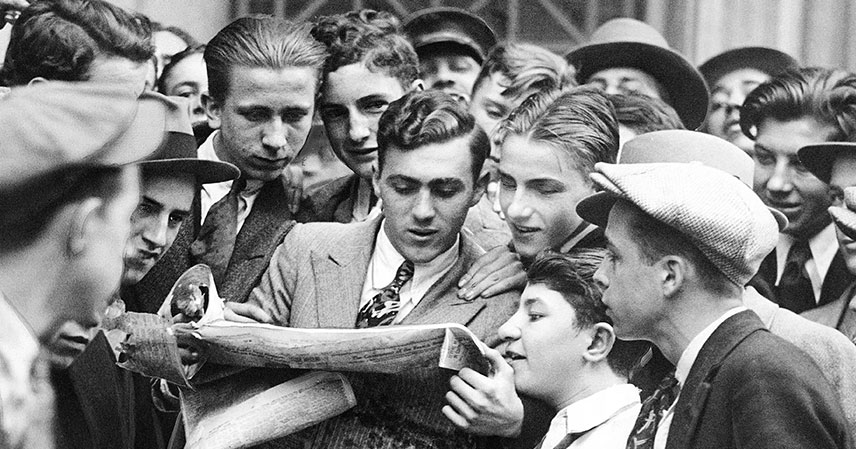Andrew Ross Sorkin, a name synonymous with incisive financial journalism, has once again captivated readers. His latest literary endeavor, “1929,” offers a compelling deep dive into one of history’s most cataclysmic financial events. This new book arrives 16 years after his acclaimed bestseller, “Too Big to Fail.” That earlier work meticulously chronicled the 2008 financial crisis. Now, Sorkin turns his expert gaze to the past. He explores the Wall Street crash that fundamentally reshaped the United States.
The title itself, “1929,” promises a profound examination. It details ‘Inside the Greatest Crash in Wall Street History – and How it Shattered a Nation.’ It’s more than just a historical account. Sorkin aims to draw crucial parallels between the past and our present economic landscape. His unique perspective is honed by years of covering contemporary financial markets. This makes his historical exploration particularly relevant.
The Echoes of 1929: A Timeless Warning 🕰️
The year 1929 represents a pivotal moment in American history. It was a period defined by unchecked speculation and widespread economic euphoria. This eventually led to an unprecedented market collapse. Sorkin’s book meticulously reconstructs the events leading up to this catastrophe. He reveals the intricate web of decisions, personalities, and market forces at play. Understanding this historical context is vital for today’s investors and policymakers alike.
The crash didn’t just wipe out fortunes. It profoundly impacted the national psyche. It ushered in the Great Depression, a decade of immense hardship. Sorkin emphasizes how the crash “shattered a nation,” highlighting its far-reaching social and economic consequences. This historical perspective offers a stark reminder. Financial stability is not merely an economic concept. It is deeply intertwined with societal well-being.
What can we learn from such a distant event? Sorkin argues that human nature in financial markets remains constant. Greed, fear, and herd mentality played significant roles in 1929. These same elements continue to influence market behavior today. The book serves as a powerful cautionary tale. It urges us to recognize the warning signs of excessive speculation and systemic risk. Ignoring these historical lessons can lead to disastrous outcomes.
The book likely delves into the regulatory environment of the time. It will explore the lack of safeguards that allowed the crisis to escalate. This historical examination provides valuable insights. It informs ongoing debates about financial regulation and oversight. The need for robust frameworks to prevent future meltdowns remains a critical discussion point.
From 2008 to 1929: Sorkin’s Unique Lens 🔍
Andrew Ross Sorkin is uniquely positioned to analyze financial crises. His first book, “Too Big to Fail,” offered an insider’s view of the 2008 meltdown. It was praised for its detailed reporting and compelling narrative. That experience gave him direct insight into the mechanics of modern financial collapses. This background undoubtedly enriches his analysis of the 1929 crash.
Sorkin understands the human drama behind economic figures. He knows that financial crises are not just about numbers. They are about people, decisions, and profound consequences. His ability to weave together intricate financial details with personal narratives makes his work accessible. It transforms complex economic history into engaging storytelling. This approach helps readers grasp the true impact of these events.
Comparing 1929 and 2008 reveals striking similarities and crucial differences. Both periods saw significant asset bubbles and widespread overconfidence. Both resulted in severe economic downturns. However, the regulatory responses and global contexts varied. Sorkin’s dual expertise allows him to highlight these nuances effectively. He provides a sophisticated understanding of financial market evolution.
His work underscores a fundamental truth: financial crises are cyclical. They often arise from similar patterns of human behavior and market dynamics. By studying “1929,” readers gain a deeper appreciation for this cyclical nature. This historical awareness is essential. It helps us prepare for and potentially mitigate future economic challenges. Sorkin’s work bridges the gap between past financial catastrophes and present-day realities.
Beyond the Books: Sorkin’s Media Empire and Influence ✍️
Andrew Ross Sorkin is far more than just an author. He is a prominent figure across multiple media platforms. His influence extends well beyond his best-selling books. He serves as a respected columnist for The New York Times. There, he founded the influential DealBook newsletter and summit. These platforms provide daily insights into global finance and corporate deal-making.
His role as a co-anchor on CNBC’s “Squawk Box” further solidifies his presence. He engages directly with market leaders and policymakers. This gives him a real-time pulse on economic developments. His on-air discussions often set the agenda for financial discourse. His questions challenge conventional wisdom. They push for deeper understanding of complex issues.
Beyond non-fiction, Sorkin also co-created the hit Showtime series “Billions.” This show, starring Damian Lewis and Paul Giamatti, offers a fictionalized look. It explores the high-stakes world of hedge funds and federal prosecution. “Billions” demonstrates Sorkin’s ability to translate complex financial themes into popular culture. This broad appeal helps to demystify finance for a wider audience.
Sorkin’s diverse portfolio amplifies his message significantly. He uses various channels to educate, inform, and entertain. He bridges the gap between academic analysis and mainstream understanding. His work encourages a more informed public discourse on economic matters. This makes his insights into “1929” particularly impactful. They reach a broad and diverse readership.
Key Insights from “1929” for Today’s Investor 💡
- Understanding Speculative Bubbles: The book highlights the dangers of irrational exuberance. It shows how unchecked speculation can inflate asset prices to unsustainable levels. Recognize the signs of a bubble to protect your investments.
- The Human Element in Panics: Sorkin emphasizes that fear and herd mentality drive market crashes. Emotional decision-making often overrides rational analysis during crises. Maintaining a disciplined approach is crucial.
- Regulatory Imperatives: The absence of effective regulation contributed greatly to the 1929 crash. This underscores the ongoing need for robust financial oversight. Strong regulatory frameworks help prevent systemic risks from materializing.
- Long-Term Perspective: Financial history offers invaluable lessons. Studying past downturns helps investors understand market cycles. It encourages a long-term investment strategy over short-term speculation.
- The Interconnectedness of Markets: The crash of 1929 quickly spread beyond Wall Street. It impacted the entire global economy. This illustrates the interconnected nature of financial systems. A crisis in one area can have far-reaching effects.
Andrew Ross Sorkin’s “1929” is more than a historical account. It is a vital resource for navigating our complex financial world. By examining the past, Sorkin equips us with tools to understand the present. He helps us to anticipate potential challenges in the future. His work serves as a powerful reminder. History offers profound lessons, if we are only willing to listen.
Source: ‘Disorder, fright and confusion’: looking back at the devastating Wall Street crash of 1929



